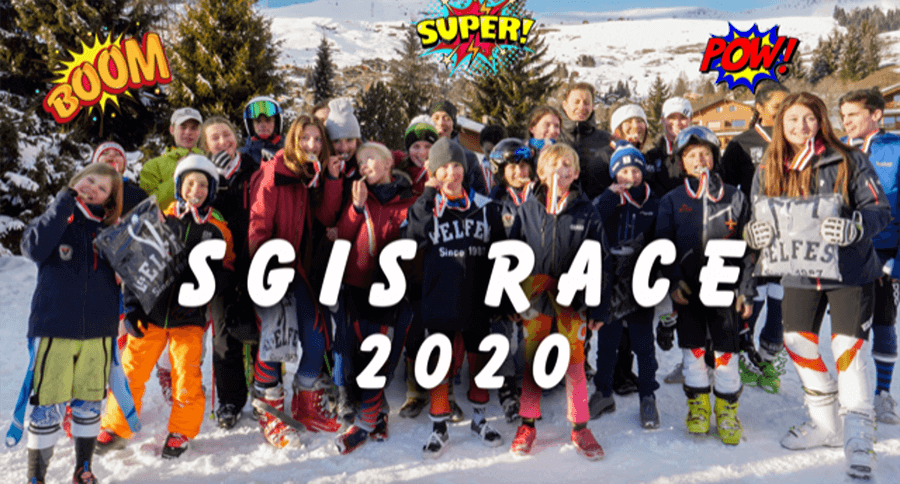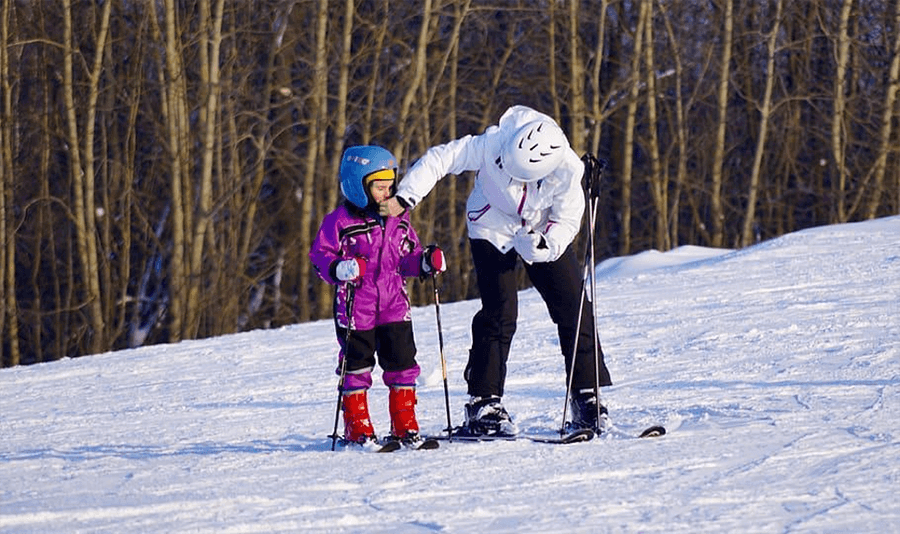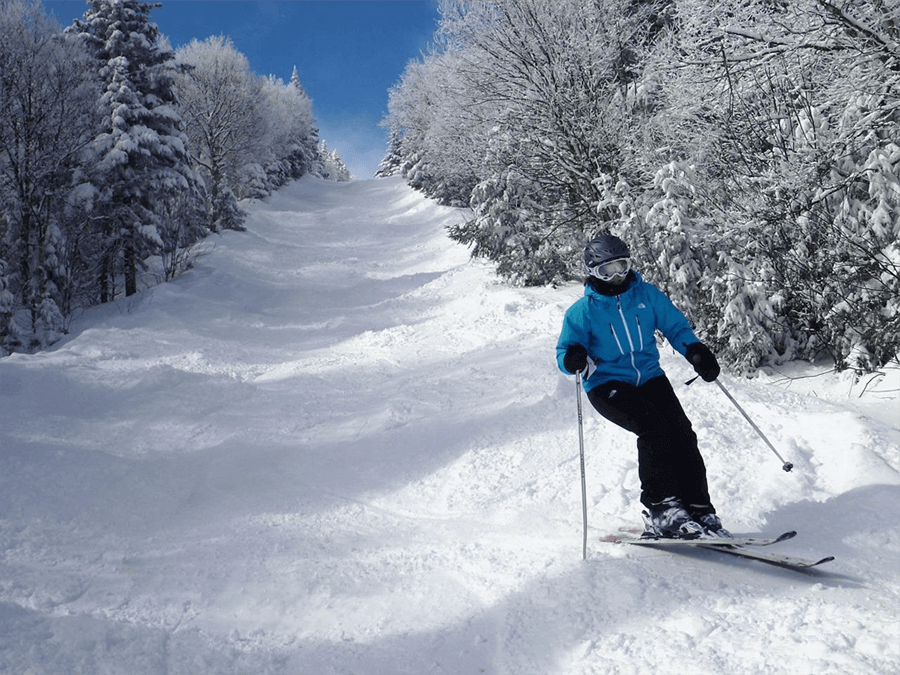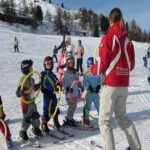UNDERSTANDING SKI RACING CHALLENGES AND COSTS

Are you a ski racing enthusiast? Have you always wanted to participate in ski racing? If you have, it’s worth noting that options can be limited.
Unlike the case with snowboarding and freeskiing, the International Ski Federation (FIS) regulates international tournaments in alpine skiing. To participate in ski racing competitions you must be a member of a ski club, which should belong to a national ski association (NSA). Only NSAs are authorized to enter participants in FIS events.
Becoming a participant at the highest level doesn’t happen instantly. Most racers get there only after many years of traversing the globe in an attempt to boost their ranking points by racing at Junior, Citizen, Continental, and FIS cup levels.
For many upcoming athletes, this process begins soon after they complete the FIS children’s races. These are designed for children aged between 12 and 15 years. Racers under 18 years of age spend up to 30 days touring the Southern hemisphere and European glaciers. They do so in pursuit of winter-like conditions. In between November and March, the children train several days a week and throughout the weekend.
The cost of ski passes, equipment, piste, and the club can amount to thousands of Euros. This begs the following question:
IS SKI RACING A PRIVILEGE OF THE RICH?
Not really, since this is where the distinct national arrangements come in. Once you incorporate coaching, camps, and service costs, you can easily understand why ski nations with developed training and educational systems have a higher standing.
Athletes who make it to the national team are often those that began training from an early age. The higher the athlete’s level, the more the requirements and training required. Often, the athletes hardly enjoy time with their friends and families, nor do they go on holiday between May and June. Being in the national team isn’t a guarantee that all your costs will be catered for. Many world cup ski racing athletes are forced to work odd jobs or even raise money during the off-season. This helps them to address the costs which can range between €30,000 and €100,000. The former cost is for athletes who are paying to join team camps. The latter is for racers who have no team structure and have to pay for a ski man or coach.
The best performing 10 to 12 male and female World Cup racers earn, on average, €100,000 annually in prizes before tax. They also receive an amount from equipment providers and sponsors to give them a comfortable lifestyle. However, only the superstars make it to the seven-figures.
ALPINE SKI RACING CAN BE COSTLY

Some experts in the industry believe that ski racing is fast becoming unaffordable, comparable to college tuition in the United States. It’s impossible to tell why this is the case. This is why concerned parties are wondering whether there has been any added value to justify the high costs.
Despite numerous complaints, the price today lies at $500,000–an astronomical cost! These numbers have been derived from a recently completed study by U.S. Ski and Snowboard that analyzed clubs in different parts of the country. They later concluded that the cost for comprehensive junior ski racing up to the high school level could be even higher for players in elite programs. Players in private centers are believed to be paying even more!
GOING BACK IN HISTORY
Back in 1984, the cost of ski racing adjusted for inflation was approximately $29,000. Equipment was either free or very cheap. The process of scaling the heights of ski racing wasn’t as complex as it is today; there were no comprehensive programs to sign up for nor did racers need to travel for summer or autumn training.
Players spent approximately $10,000 for races, camps, and equipment back then, with the most expensive ski racing option costing approximately $40,000 when adjusted for inflation. This was inclusive of private school education. The cost of racing for club members would have been far less than the aforementioned costs.
DOUBLED COSTS
The costs today have more than doubled compared to a decade ago.
Of course ski racing has since evolved and can’t be compared to what it was then. Still, the increased costs haven’t enhanced overall performance in the sport. In the US for instance, the international junior ski racing results are nothing close to remarkable compared to the last decade. This is a clear indication that there hardly has been any value achieved despite the higher costs. Currently, the US is leading among countries with the highest charges on ski racing.
WHAT’S THE SKI RACING STATE OF AFFAIRS IN SWITZERLAND?

Didier Plaschy, a former Swiss champion and commentator, has won various World Cup slalom races in the late 90s. He is the co-CEO and regional director of the Valais region in Switzerland, where he is popularly known as someone who likes to challenge convention. His contributions are evident in the Swiss slalom team, which holds the position of first place in the World Cup slalom standings; a large percentage of those racers come from Valais.
Plaschy maintains his relationship with Daniel Yule and Ramon Zenhuesern, who recently broke the Swiss record of the two slalom World Cup wins. Plaschy’s contribution to this success is an indication that while the Swiss have been poorer performers at slalom, he is committed to improving slalom skiing.
ESCALATING SKI RACING COSTS IN SWITZERLAND
Plaschy is committed to reducing the increasing cost of ski racing in Switzerland. He harbors untraditional views in regards to mock skiing and dry land training strategies–both of which he utilized in training his star athletes.
He believes that racers under 16 years of age should be forbidden from skiing beyond early May (when the snow melts away) until the trails are covered in snow. Plaschy also believes that the availability of complex modern equipment and continuous skiing opportunities are the very things that are denying racers an opportunity to rest, enjoy life, and get fit.
According to Plaschy, ski racing is fast hijacking children’s lives as the wealthy seize control of the sport. Plaschy mentions that the cost of skiing at home is approximately $38 while skiing away from home on the glacier costs $230.
DOES THIS SOUND FAMILIAR?
Yes, it does. When it comes to alpine skiing, however, a few runs and warm-ups at the FIS level would set you back a whopping $300 or $400 every day.
Many people in the U.S. wonder whether the country is enhancing the performance or denying young children the chance to develop all-rounded skills and to lead a normal life back home. Few coaches believe that racers can improve their skiing through racing alone. It’s worth noting that competition plays a huge role in endurance sports training such as team sports and cycling.
WHAT DOES VIS OFFER?
VIS Elite Ski Academy
The Elite ski team has had 8 days on the glacier, 22 afternoons of PT training during the fall to get them prepared for the ski season. That’s just to get them prepared.
(embed this video in this section). https://youtu.be/lly5CzQpqhc
As of mid December they have had 4 afternoons a week of ski training with swiss coaches.
They have had either SGIS race or they participate in the Swiss Race circuit.
There are also 2 weekends a month with ski races.
They will be participating in 2 day races in Pila, Italy in a few weeks time.
They get and continually receive individual video feedback from their professionally trained coaches.
The team works weekly on every discipline – slalom / GS / Super G and combi-race.
Recently, VIS had its first ski race of the season.
The schools that attended were Leysin American School, Le Regent, Int School of Lausanne, Aiglon college, Beau Soleil and IS Berne.
The upcoming races are at Crans Montana, Morgins, Gstaad and Pila to name just a few.
Whether you’re out to engage in fun and exciting activities or are preparing for a ski race, VIS is one of the best skiing regions in Switzerland and across the world.
To find out more about the elite Verbier Ski Academy.
The VIS Freeride Academy
They have had 22 afternoons of PT Training in the fall, just to get ready for the busy Freeride winter ski season.
The team is on the Freeride World Tour competitions. They compete and participate in the competitions, one of them has been on the podium for the last 2 races.
They have 3 afternoons on the mountain between a free ride / freestyle and mountain guide. This is where they get the real meat of their training. Being out in the backcountry, with professionally trained guides, skiing and logging on hours on their skis launching chutes, and cliffs. All during the school week. What’s better than that to get them world class confidence?
They went and skied the Vallée Blanche with the mountain guide – how many students do this? at 14 years old? Answer, only the top 1% of elite freeriders get this chance.
They learn about avalanche risks and risk in the mountain / reading terrain / jumps / flips / rails and all of the other great things about skiing as a child.
But it’s not all just for the elite. Every child has a chance to ski while at VIS.
There’s plenty of snow and students will be under the supervision of trained and experienced supervisors.
Students attending school in Verbier International School get a chance to ski twice every week from January to March.
VIS lies in one of the most beautiful and biggest ski areas in Switzerland. If you’re at an advanced level, you will participate in the VIS racing team competitions across Switzerland.
You can also join the VIS freeride team.
VIS believes that different clubs can collaborate to make the most out of the skiing sport and plans are underway to accomplish this.
The VIS club has been instrumental in regulating ski schedules. This allows students to: engage in other activities, rest, work on enhancing their skills, and socialize with friends and family members.
FINALLY
The rising cost of ski racing has prompted more coaches to exit ski racing for the sake of their families. It’s time to rethink the circumstances that are causing this increase in cost and work towards finding practical solutions. VIS is already leading the way by offering reasonable prices with flexible schedules while maintaining high standards.






